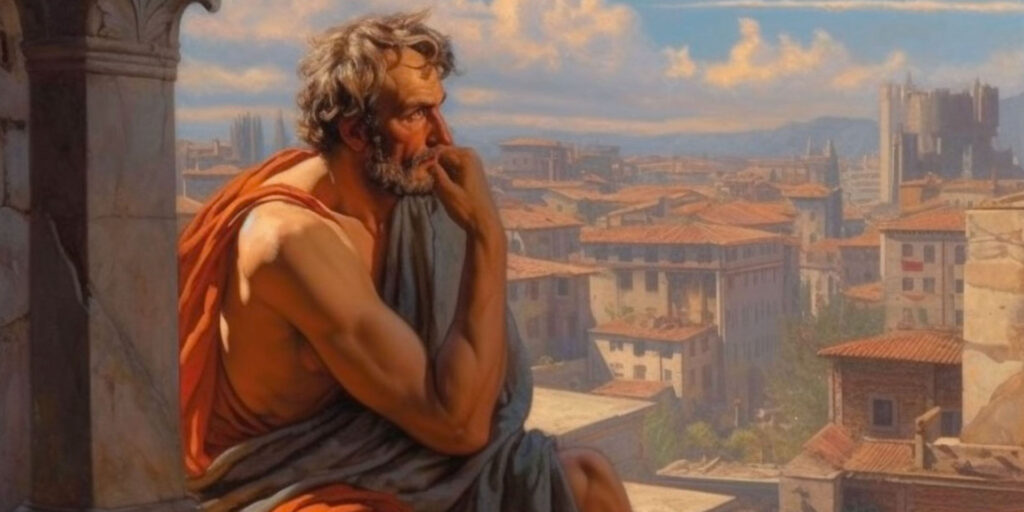
Prior essays on the problem of miracles:
Christianity is the one religion that claims its origins in the humiliation of its God. As followers of its crucified leader dispersed widely after its initial events, traveling great distances from a remote corner of the Empire over dusty Roman roads, they told a bizarre tale in every respect. How ludicrous the story of God made man, who worked miracles among men, who suffered the most heinous execution the Romans could devise. A man who, if these fables are factual, arose bodily from the dead, utterly transforming the lives of all who saw Him — and these same men who audaciously claimed to be eyewitnesses to this mysterious manifestation.
The people of the ancient world were no strangers to quixotic stories, endless tales of gods and goddesses, myths, and magic. Rome, in its pragmatic wisdom, absorbed them all with their blood rites and orgies, asceticism, and temple prostitutes. Such tolerance kept the Empire unified and the conquered content; there was no sense in risking unrest and rebellion over senseless fantasies.
Such legends amused and titillated, and their rituals provided feeble comfort in a brutal world ruled by heartless Fate. But Christianity was more than just an imagined story of jealous gods and devious deities. Christianity’s implausible story contained a spark that was not present in pagan fables: a flicker of hope in hopeless darkness, of purpose in a world bound and weighted by emptiness and futility. This spark fell upon the dry straw of a desperate world and started a conflagration that reshaped that world in ways unimaginable.
This revolution, arising from a most contentious corner of the Empire — another abrasive annoyance from the ever-troublesome Jews — in a short time became a growing threat to an Empire enfeebled by its ruthless tyranny and the decadence borne of absolute power devoid of principle. The pagan Empire had no grasp of Christianity’s insidious power: a movement thriving among the chattel classes, criminals and no-counts, women, and slaves. It spat in the face of the tolerance of its time, refusing the worship of the Emperor and bending the knee to no pagan rite or ritual. It spoke of freedom for the slaves, equality for women, and obedience to God before Caesar. When persecuted, it grew even faster than when left alone — and it could not be left alone long, lest it conquer the very conquerors themselves.
But who were these Christians? And what of this criminal, this unknown itinerant rabbi whose rabid followers feared not death but proclaimed some glorious resurrection of the inglorious rabble-rouser?
Any mention of Jesus of Nazareth in the stories and histories of Rome and its Empire is most remarkable. Countless criminals and revolutionaries were slaughtered in Rome’s savage fashion for offenses both great and minor. Why mention this one, a deluded and subversive sorcerer executed by crucifixion?
The inscrutable nature of these Christian outcasts, who turned the other cheek while steely in their convictions, cried out for some explanation. Since the revolution started by Jesus could not be ignored, its Founder provoked mention among those compiling the history of Rome and its rule. These references were scattered and scornful, yet unmistakable in identifying the source of the Christians’ unshakable foundations. Some references were more elliptical than others, but all point to a living man in history.
The first great Christian persecution occurred under Nero. Seeking scapegoats for the Great Fire in Rome in 64 A.D., Nero singled them out. The Roman historian Tacitus wrote concerning the Great Fire in Book 15, chapter 44 of his Annals:
Consequently, to get rid of the report [that Nero had intentionally set the fire], Nero fastened the guilt and inflicted the most exquisite tortures on a class hated for their abominations, called Christians by the populace. Christus, from whom the name had its origin, suffered the extreme penalty during the reign of Tiberius at the hands of one of our procurators, Pontius Pilatus, and a most mischievous superstition, thus checked for the moment, again broke out not only in Judea, the first source of the evil, but even in Rome, where all things hideous and shameful from every part of the world find their center and become popular. Accordingly, an arrest was first made of all who pleaded guilty; then, upon their information, an immense multitude was convicted, not so much of the crime of firing the city, as of hatred against mankind. Mockery of every sort was added to their deaths. Covered with the skins of beasts, they were torn by dogs and perished, or were nailed to crosses, or were doomed to the flames and burnt, to serve as a nightly illumination, when daylight had expired.
During the reign of Emperor Trajan in 112 A.D., Christianity was outlawed in the Roman Empire but was not commonly persecuted. A Roman governor, Pliny the Younger, in a letter to the Emperor, requested guidance on how to prosecute the crimes of Christians and described their beliefs:
… they met on a stated day before it was light, and addressed a form of prayer to Christ, as to a divinity, binding themselves by a solemn oath, not for the purposes of any wicked design, but never to commit any fraud, theft, or adultery, never to falsify their word, nor deny a trust when they should be called upon to deliver it up; after which it was their custom to separate, and then reassemble, to eat in common a harmless meal. …
Hence, while he did not explicitly describe Christ, Pliny indicated that early Christians worshiped him as a god.
The Roman historians were not alone in documenting the events surrounding Christ and the early Church. Josephus is considered to be the most well-known non-Roman historian. Flavius Josephus was a Jewish Pharisee, born in Jerusalem in around 37 AD. During the Jewish Revolt in 66 A.D., he was captured by the Romans, imprisoned, set free, and then retired to Rome as a citizen, where he wrote a history of the Jewish Revolt called The Wars of the Jews and a subsequent work called Antiquities, a history of the Jews.
Josephus mentions Jesus in two passages. The first, from Antiquities 20.9.1, speaks of the martyrdom of James under Ananus:
But the younger Ananus who, as we said, received the high priesthood, was of a bold disposition and exceptionally daring; he followed the party of the Sadducees, who are severe in judgment above all the Jews, as we have already shown. As therefore Ananus was of such a disposition, he thought he had now a good opportunity, as Festus was now dead, and Albinus was still on the road; so he assembled a council of judges, and brought before it the brother of Jesus the so-called Christ, whose name was James, together with some others, and having accused them as law-breakers, he delivered them over to be stoned.
The second reference is known as the Testimonium Flavianum (Antiquities 18.3.3). The passage reads:
Now there was about this time Jesus, a wise man, if it be lawful to call him a man, for he was a doer of wonderful works, a teacher of such men as receive the truth with pleasure. He drew over to him both many of the Jews, and many of the Gentiles. He was the Christ, and when Pilate, at the suggestion of the principal men among us, had condemned him to the cross, those that loved him at the first did not forsake him; for he appeared to them alive again the third day; as the divine prophets had foretold these and ten thousand other wonderful things concerning him. And the tribe of Christians so named from him are not extinct at this day.
The complete authenticity of this passage has been questioned, and the consensus is that there may have been some later Christian interpolation. There is disagreement on how the original may have read; an Arabic translation from the tenth century is thought to be closest to the original:
At this time there was a wise man who was called Jesus. And his conduct was good, and he was known to be virtuous. And many people from among the Jews and the other nations became his disciples. Pilate condemned him to be crucified and to die. And those who had become his disciples did not abandon his discipleship. They reported that he had appeared to them after his crucifixion and that he was alive; accordingly, he was perhaps the Messiah concerning whom the prophets have recounted wonders.
For a more thorough discussion of this controversial passage, see this discussion. You may also view Antiquities online.
Other brief but fascinating glimpses also occur in ancient literature. Thallus alludes to the three-hour darkness at the crucifixion. In the second century, the satirist and playwright Lucian wrote The Passing of Peregrinus. The tale’s hero, Peregrinus, was a Cynic philosopher who became a Christian, rose in prominence in the Christian community, and then returned to Cynicism. Peregrinus describes the Christians thusly:
The Christians, you know, worship a man to this day … the distinguished personage who introduced their novel rites, and was crucified on that account … You see, these misguided creatures start with the general conviction that they are immortal for all time, which explains the contempt of death and voluntary self-devotion which are so common among them; and then it was impressed on them by their original lawgiver that they are all brothers, from the moment that they are converted, and deny the gods of Greece, and worship the crucified sage, and live after his laws. All this they take quite on faith, with the result that they despise all worldly goods alike, regarding them merely as common property.
Why is all of this significant? Christianity’s history, which is based on the authenticity of its miracles, has been challenged on many fronts. Those who dismiss the Scripture as hopelessly biased and unreliable (an accusation to be addressed in subsequent essays) maintain that Jesus Himself never existed but was a mythical fabrication of later followers. If He did exist, they claim, the “historical Jesus” bore virtually no resemblance to the “Christ of faith.” Yet even the enemies of Christianity in ancient times bear witness to his existence, to his crucifixion under Pilate, to the confident convictions of His followers from the very first that He was God, and they proclaimed His Resurrection to be the basis of their hope, at the core of their unshakeable convictions.





